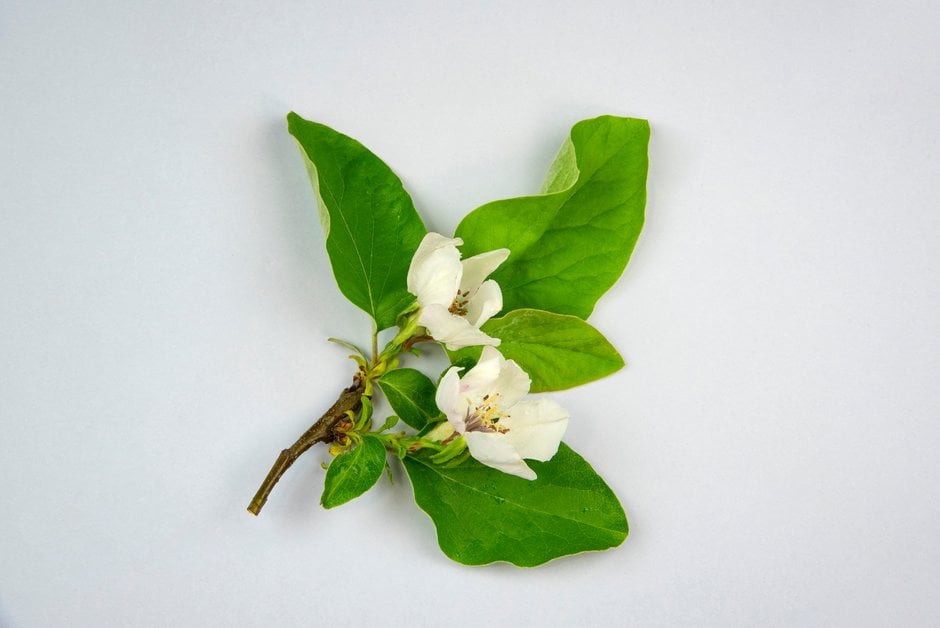Cydonia oblonga (F)
quince
A large shrub or small tree with crowded branches bearing broadly oval, mid-green leaves with grey, downy undersides. Solitary, pale pink to white flowers are produced in late spring, followed by edible, aromatic, golden-yellow, pear-shaped fruit. A number of cultivated varieties of quince have been developed from this species.
Size
Ultimate height
2.5–4 metresTime to ultimate height
10–20 yearsUltimate spread
2.5–4 metresGrowing conditions
Moisture
Moist but well–drainedpH
Acid, Alkaline, NeutralColour & scent
| Stem | Flower | Foliage | Fruit | |
| Spring | Pink White | Green Grey Silver | ||
|---|---|---|---|---|
| Summer | Green Grey Silver | |||
| Autumn | Green Grey Silver | Yellow | ||
| Winter |
Position
- Full sun
Aspect
West–facing or South–facing
Exposure
Sheltered Hardiness
H5Botanical details
- Family
- Rosaceae
- Native to GB / Ireland
- No
- Foliage
- Deciduous
- Habit
- Bushy
- Potentially harmful
- Seeds contain toxins so these should be removed if you are considering eating the fruit, usually grown as an ornamental shrub. Pets: Fruit are ornamental - not to be eaten - see the HTA guide to potentially harmful plants for further information and useful contact numbers
- Genus
Cydonia are large deciduous shrubs with simple, ovate leaves and 5-petalled, bowl-shaped pink or white flowers, followed by pear-like fruits, edible when ripe
- Name status
Correct
- Plant range
- W Asia
How to grow
Cultivation
Grow in deep, fertile, moist but well-drained soil in a warm, sheltered spot in full sun. See quince cultivation
Propagation
Propagate the species by seed sown in autumn. Species and cultivars may be propagated by grafting, semi-ripe cuttings in summer or hardwood cuttings in autumn/early winter
Suggested planting locations and garden types
- Cottage and informal garden
- Wildlife gardens
- Edible fruit
Pruning
Pests
May be susceptible to caterpillars and aphids
Diseases
May be susceptible to quince leaf blight, brown rot, fireblight, powdery mildews and honey fungus
Get involved
The Royal Horticultural Society is the UK’s leading gardening charity. We aim to enrich everyone’s life through plants, and make the UK a greener and more beautiful place.
